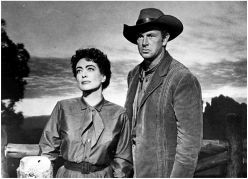Personal Reflections
James R. Elkins
My father was a hard working man. He lived within his means and wanted little. The one thing he had an eye for was a new car. I was six years old when my mother acquiesced and my father bought a sleek new green ’51 Pontiac Bonneville. Its amber-colored Indian hood ornament is still emblazzed in my memory. That year-of-the-new-car—1951—was memorable: I started school, my father drove the new Pontiac off a Mayfield, Kentucky car dealer’s two-car-showroom floor, and we began to frequent the local drive-in theaters. These were the days before we got our first TV—a stodgy Hoffman console model—and after the only movie theater in Benton, seven miles from where we lived, had closed.
Those nights at the drive-in theater I was in heaven. The best of those evenings were the all-night shows when movies were shown from dusk to dawn, and I fell asleep with movies bleeding into dreams. To get through a night of movies—I’m not sure I ever managed to actually stay awake all night—required pillows and popcorn, a cooler of RC Cola, and sandwiches. Too frugal to buy anything from the snack-bar, we brought the food from home.
It was at drive-in theaters that I saw The Robe (1953), Demetrius and the Gladiators (1954), and The Ten Commandants (1956). These lavishly produced Biblical epics transported me to a different world and a different time, as did the Westerns popular in the 1950s: High Noon (1952), Shane (1953), and Bad Day at Black Rock (1955). We had to get to the drive-in early to get a decent parking place to see the new release Westerns.
In 1954, I saw my first film in a movie theater. My uncle, Barney Thweatt, who had been on the Brewers basketball team that won the State Championship in 1948 after going undefeated in the regular season, took my brother and I on a Friday to visit his barber. After our haircuts, he decided, for some reason, to take us to the movie theater next door to the barbershop. I have a distinct memory of sitting in velvet silent darkness as we wait for the movie to begin. Lush burgundy curtains are finally pulled aside and I am swept up into a story that leaves me feeling like I have been transported to a different world. I was witness that afternoon to a story and a world distant from my own, a film world of paradox that makes fiction real and my own life a piece of fiction. In the meandering, turbulent, blessed years that followed that magical afternoon, I have never forgotten watching that first movie-theater film—Johnny Guitar (1953)(starring Sterling Hayden & Joan Crawford).

I grew up on a western Kentucky farm, survived the advent of television (circa 1950s),was an undergraduate student at Kentucky’s big university, and served in the Army during the Vietnam war era. I became a lawyer and, eventually a film goer, and a law teacher. I still live in that Friday afternoon film world, sconvinced that the world I inhabit is as movie-like as it is real.
[A different version of this commentary appears in James R. Elkins, Reading/Teaching Lawyer Films, 28 Vt. L. Rev. 813 (2004) [online text], and a revised version in a French journal, "Comment lire les films juridiques," 35 (1) Les Cahiers de l’APLIUT 8 (2006)] [on-line text]
![]()
Note
<1> It was Marshall McLuhan who reminded us that “[t]he business of the writer or the film-maker is to transfer the reader or viewer from one world, his own, to another, the world created by typography and film. That is so obvious, and happens so completely, that those undergoing the experience accept it subliminally and without critical awareness.” [Marshall McLuhan, Understanding Media: The Extensions of Man 285 (New York: McGraw-Hill pb ed., 1965)]
